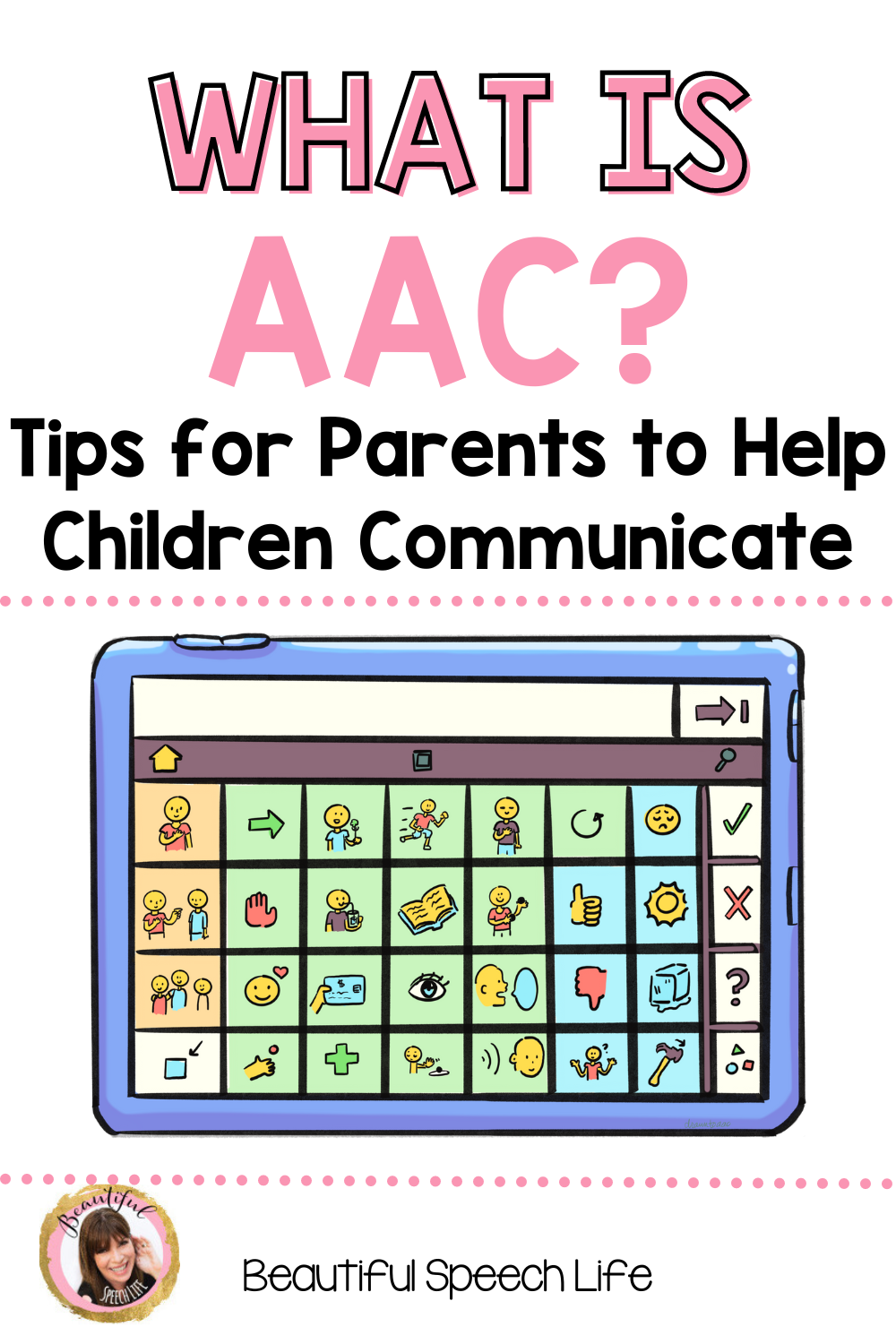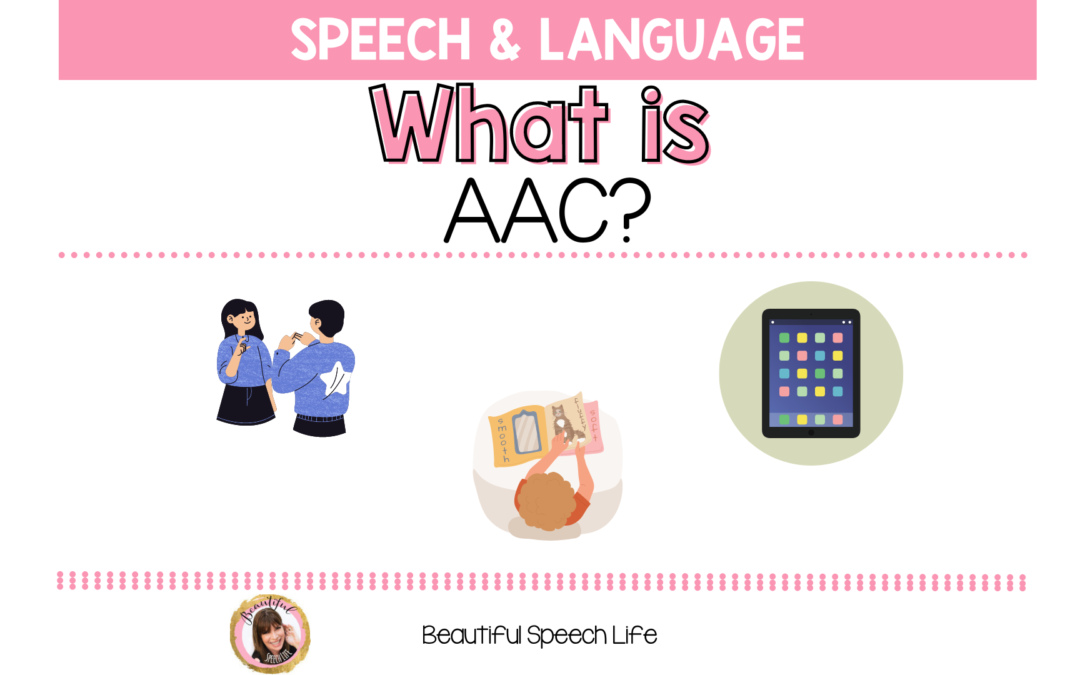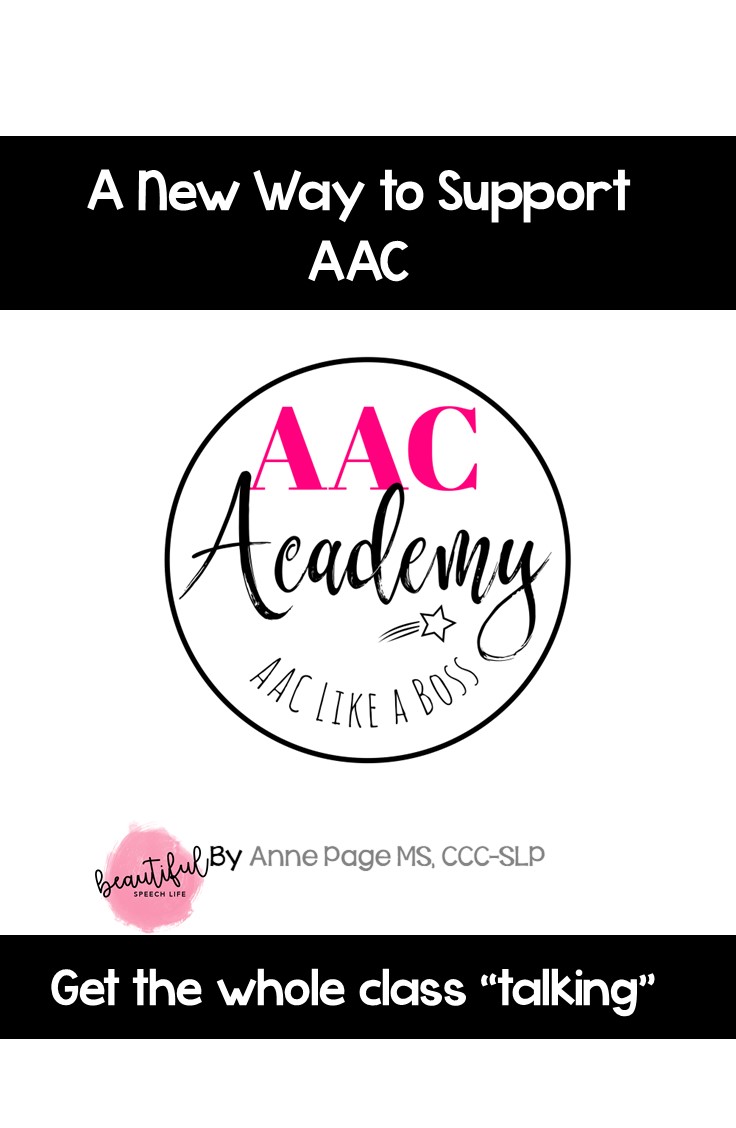What is AAC? AAC stands for Augmentative and Alternative Communication. It refers to a range of methods and tools that can be used to augment or replace spoken communication for people who have difficulty speaking or expressing themselves.
Are you a parent considering AAC for your child? Maybe your pediatrician or speech language pathologist recommended having a look at AAC. But you feel hesitant because you don’t know much about it. Or maybe you’re worried that it will stop your child from talking. Let’s start with some basic facts and information about AAC and exactly what it is.
The first “A” in AAC is for augmentative. To augment is to increase or to add to. Augmentative communication is when you add something to your speech (eg. a core board for pointing or a speech generating device). This can make your message clearer to your listener.
The second “A” is for alternative. This is using an alternative to spoken voice to communicate. This is for individuals who cannot speak or who can speak but it’s very difficult to understand them. AAC will help others understand their message.
AAC can include things like gestures, sign language, communication boards or books with pictures or symbols, and assistive technology such as speech-generating devices or apps. It is used by people of all ages who have a wide variety of communication needs, including those with autism, cerebral palsy, Down syndrome, childhood apraxia of speech, developmental delays, stroke, and other conditions that can affect language development or production.
The goal of AAC is to enable individuals to communicate more effectively and participate more fully in their daily lives. Communication is a fundamental human right .
AAC allows people to communicate more fully.
There are many different types of Augmentative and Alternative Communication (AAC) tools and methods that can be used, depending on the needs and preferences of the individual. Here are a few examples:
- Gestures: Simple hand gestures, such as waving or pointing, can be used to communicate basic messages.
- Sign language: Formal sign languages, such as American Sign Language (ASL) or British Sign Language (BSL), can be used to communicate more complex messages.
- Communication boards or books: These can include pictures or symbols that represent different words or concepts. The individual can point to the appropriate symbol to communicate their message.
- Speech-generating devices (SGDs): These are electronic devices that allow the user to select pre-programmed words or phrases, or to type out messages using a keyboard or other input method. The device then speaks the message out loud.
- Apps: There are many apps available for smartphones or tablets that can be used for AAC. These may include pre-programmed phrases or allow the user to type out messages, which are then spoken out loud or displayed on the screen.
While It’s important to note that there is no one-size-fits-all solution for AAC, the best approach will depend on the individual’s needs and abilities. It’s also important to build upon the communication skills each person already has. AAC is truly multimodal, permitting individuals to use every mode possible to communicate.
To learn more about AAC come join me on Instagram, where I share daily AAC tips and stories of inspiration. Are you curious about using a low tech core board? You can get my free core board resource or my Big Core Vocabulary Board and see for yourself today.
Would you like to learn more about what AAC is? Download my guide.
Pin to read later:



 Hey there I’m Anne Page. I help heart centered SLPs and educators put the fun in functional communication.
Hey there I’m Anne Page. I help heart centered SLPs and educators put the fun in functional communication. 